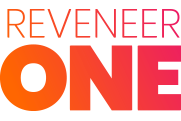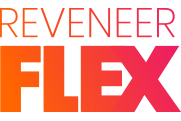Over the past week, I’ve been asked quite a bit how COVID-19 has affected our ability to execute outbound B2B lead generation strategies on behalf of our customers, given that most of the companies we typically target have moved workers to the home. We had some anecdotal evidence to suggest that, at least for some personas, the inability to travel might make them more accessible, not less.
But, I wanted to see what the data had to say.
Since most businesses began responding to the COVID-19 crisis, as we did, at the beginning of March, we thought it would be useful to compare Reveneer’s performance in the first three weeks of March, to the same performance for the first 3 weeks of February.
While this is not a perfect comparison of ‘business as usual’ vs. ‘business under COVID-19’, it does provide a useful analogy to spot significant trends, if any, in how our ability to contact decision makers might be impacted.
Here are some insights we have gained…
1.) Outbound Dials: Reveneer teams made 23% more outbound dials in the first 3 weeks of March vs. the first 3 weeks of February. This is significant in that for much of the past 1-2 weeks, the majority of Reveneer employees have been home-based. Over the next several weeks, we will continue to monitor this metric to see how moving our BDR teams to the home might affect metrics like total call volume.
2.) Connects: Reveneer teams had 19% more Connects in the first 3 weeks of March vs. the same period for February. The Connect Rate, or % of Dials that are answered, for February and March, was almost the same at 6.5% and 6.3% respectively.
3.) Conversations: Reveneer teams had 6% more Conversations (call duration greater than two minutes) in the first 3 weeks of March vs. the same period in February. However, the Conversation Rate, or % of Connects that become a Conversation decreased from 27.8% to 24.9%.
4.) Call Duration: The Average Call Duration for the March period was 21 seconds, exactly matching that for the same period in February.
5.) Demos Scheduled: Reveneer teams scheduled fewer Demos during the period in March, and the rate of Conversations converting to Demos Scheduled dropped from 33.5% to 29.0%. This reflects what we are hearing anecdotally from teams – that while they are able to get prospects on the phone and have valuable conversations at about the same rate as before, a greater number of prospects prefer to put off scheduling the demo until some time in the future. However, these conversations may represent future opportunities to schedule a demo.
6.) Demos Delivered: Reveneer teams delivered 26% more Demos in March, and the rate of Demos Delivered increased from 43.1% to 59.3%.
Based on this early data, it seems that recent responses to the COVID-19 crisis, including large numbers of workers now being home-based, have not had a significant impact on Reveneer outbound strategies, albeit over a relatively small measurement period of three weeks. Reveneer teams have been able to make outbound dials and connect with decision-makers and influencers at a rate on par with the prior month’s period.
Even as our target companies have migrated their workforce to the home, Reveneer has made similar moves, with over 95% of its employees based at home during most of March. The Reveneer technology stack is 100% cloud-based, and completely portable which made for a smooth transition.
The data also indicates that despite the potential distractions and disruptions that come from being home-based, Reveneer teams were able to produce the same or greater number of activities during the period.
Reveneer Strategies for Maintaining Performance with a Distributed BDR/SDR Team
Reveneer has employed several strategies to maintain consistent performance across its teams, and a high level of engagement between teams and their leaders, and leaders and their management. We have fielded many requests from other companies that operate BDR/SDR teams, asking how we maintain a high level of engagement with teams dispersed offsite. Here are some of the techniques we use.
- Morning strategy call to kick off the day – Each team engages in a strategy call at 8:30am with Team Leads to go over plans for the day, review prior day cadence, make adjustments, etc.
- Afternoon team debriefs – Another team call is scheduled each day at the close of the daily cadence to identify any issues that need work before next day – could be tech stack, work environment, call plan, cadence, etc.
- Cadence sheets – Just as we do in the office, each team member maintains a daily cadence – a shared google sheet that shows hour-long blocks, what each block is for (calls, sourcing, email) and quantifiable targets for what is to be accomplished (dials, leads created, emails, etc.); BDRs fill them out after each block, and share them with team leader during the stand-up calls.
- Shared Live Calling Blocks – For teams in the ramp phase, live calling blocks are held via Zoom conference for Team Leaders to provide feedback as calls are made – the whole team joins and coaching/feedback is provided after each conversation.
- Mock calls – Time is allocated for several blocks each week for team members and team leaders to practice mock calls with the training and development staff.
- Open training sessions – These are optional but highly attended training sessions, each with a single area of focus. For example, some might be for working on objection handling, while another might be about LinkedIn strategies. These are typically first thing in the morning and are brief, highly interactive, and actionable.
- Empathy – For outbound calls during the COVID-19 crisis, teams are softening call openings to be more empathetic, recognizing that we are all likely working from home, and using that as relevance by stating where we’re calling from, and asking how they are coping, etc.
- Drive Engagement – Keeping energy up and a sense of fun by creating ad hoc contests and activities that teams can carry out together over a Zoom conference. Awarding Uber-Eats gift cards and other awards on the spot.
- Friday Awards and Social Hour – Each week we end on Friday with a company-wide Zoom conference, where top performers on each team spin a ‘virtual’ wheel to win cash prizes while gaining recognition from peers.
Again, while this is a comparison based on three weeks of data, it does indicate that our ability to successfully engage prospects using our outbound model has remained consistent, even with large numbers of our target prospects operating from home.
We will continue to update this data weekly. Our customers are staying informed of their own team’s performance through live dashboards in Salesforce, and weekly performance reports that are sent out each Monday, as well as through our weekly huddles.



